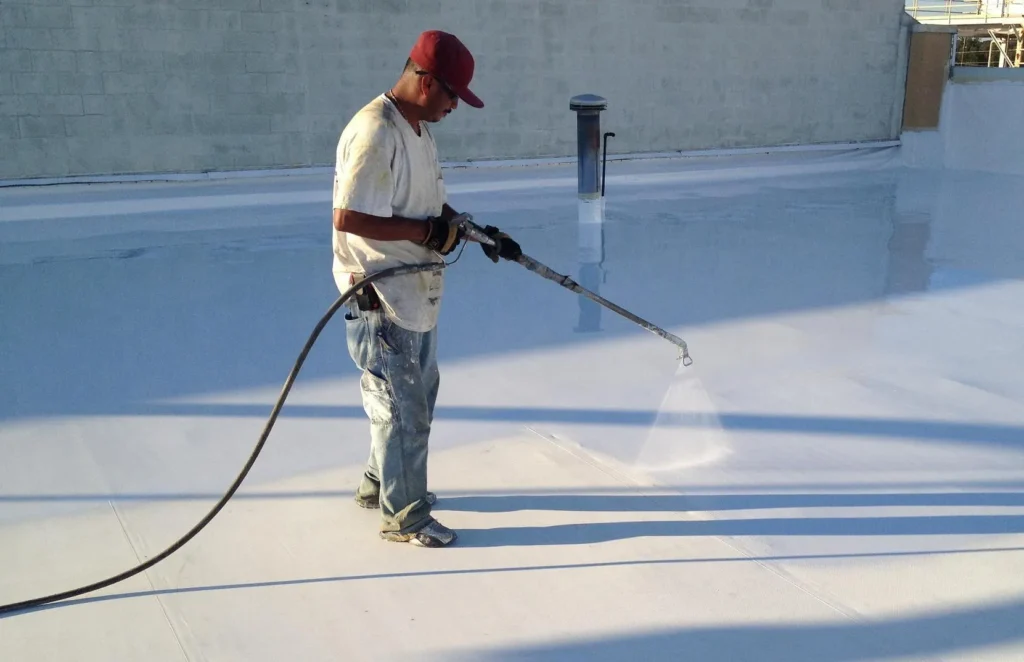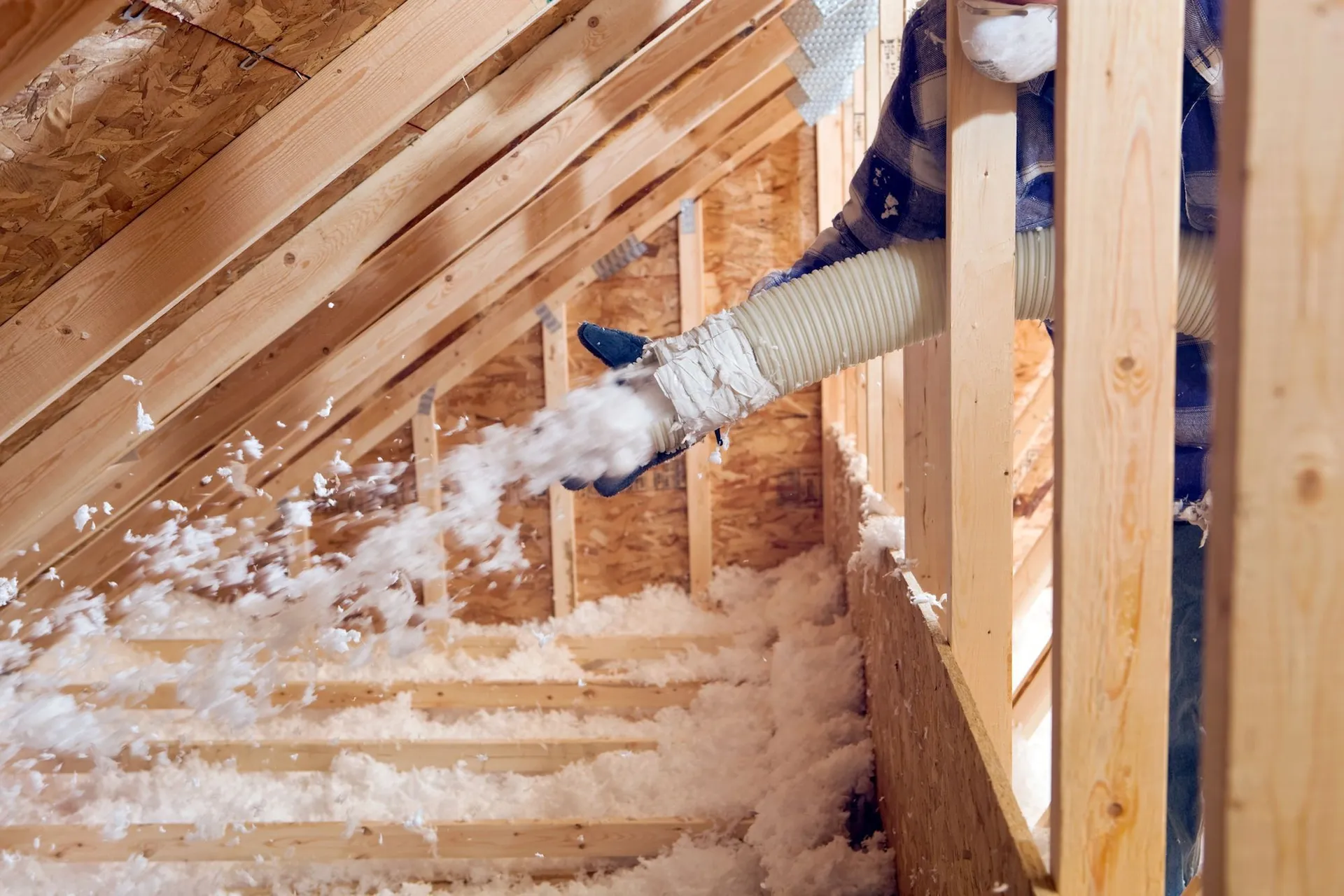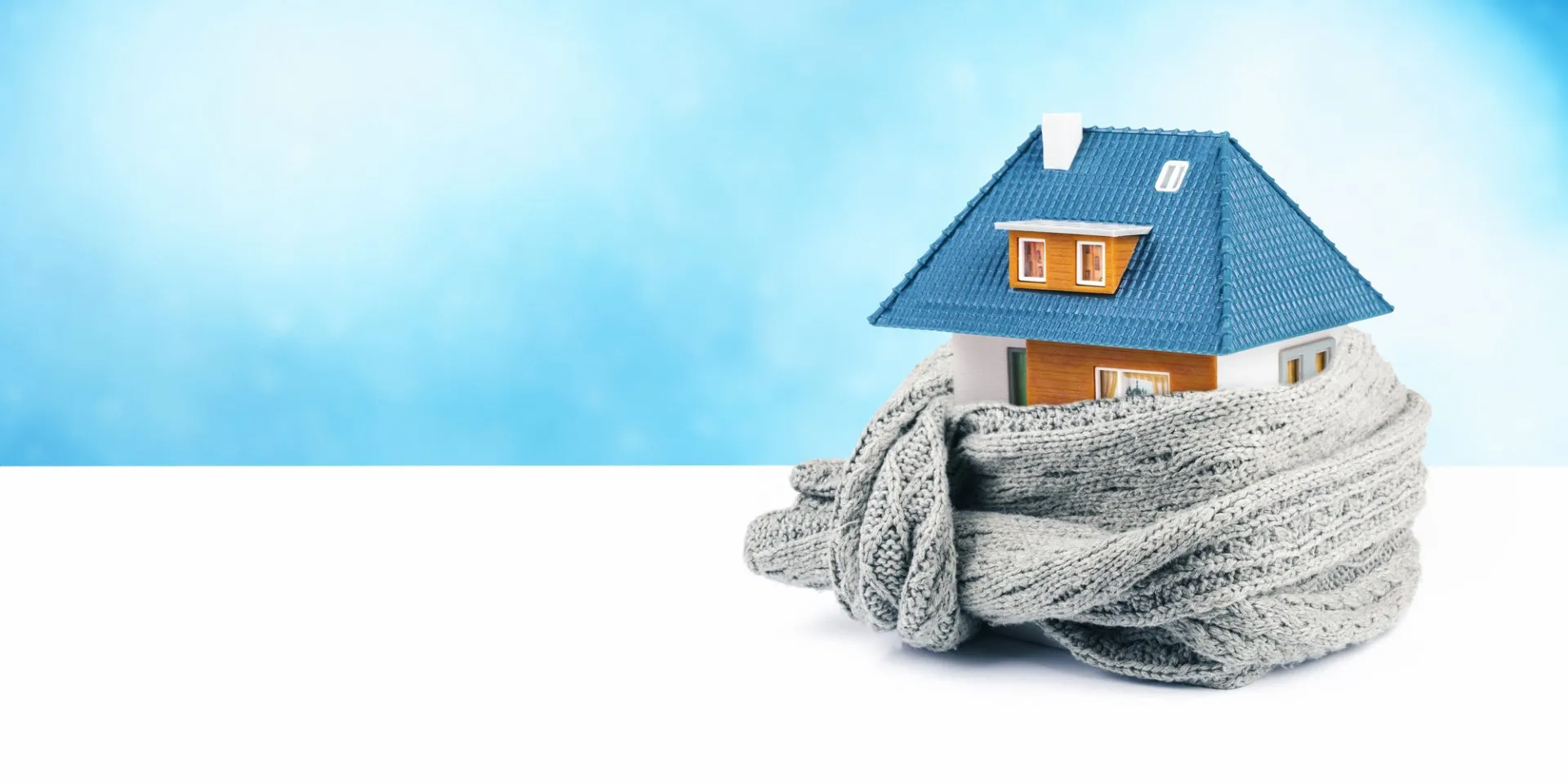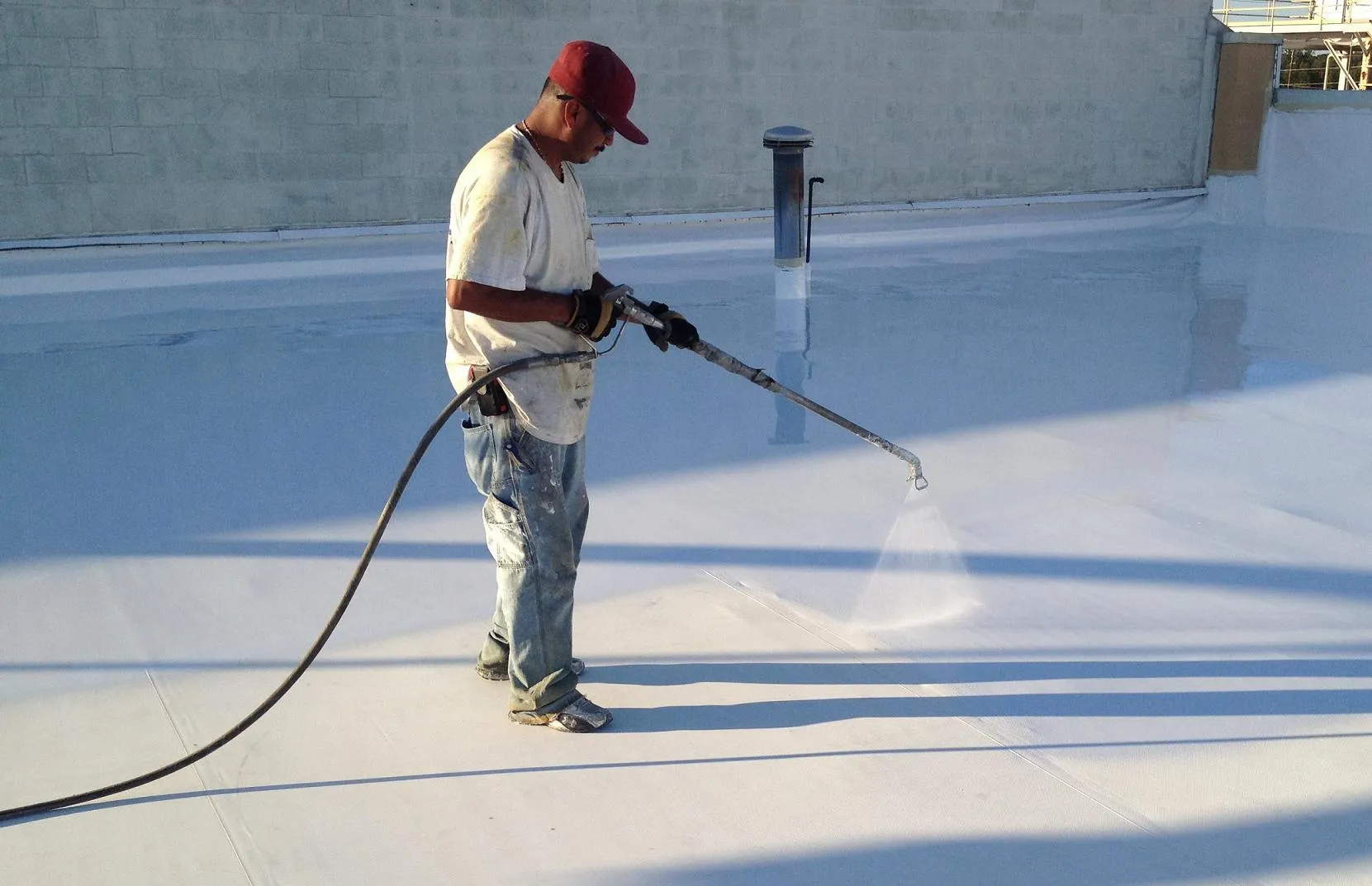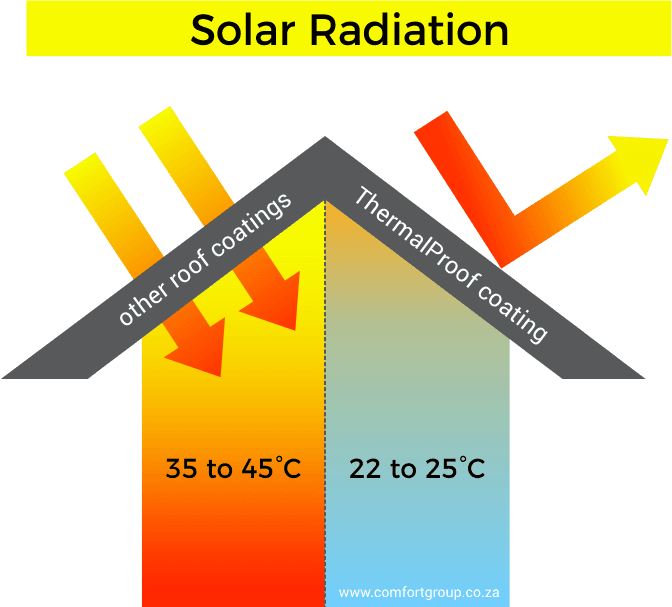If you have hot summers, now is also the time to think about changing the color and reflectivity of your roof. A dark roof can get up to 180°F on a sunny, windless day. A white roof or roof coating will reflect more of the sun’s heat so that your attic and your house stay cooler. Flat roofs are especially good candidates, because you can’t see them from ground level.
Look for a material with a high solar reflectance (sometimes called albedo). The best ones are usually smooth and white. There are, for example, white roof coatings that can be applied over asphalt shingles and most other roofing substrates (see Table). When first applied, these can provide a solar reflectance of up to 87%, which means that only 13% of the sun’s energy is being absorbed as heat. White roof coatings do weather and get dirty, however. After several years, their reflectance may go down to about 50%. This is still a significant benefit, but the degradation is worth keeping in mind.
Reflectance tests show that some roof coatings, including so-called ceramic coatings and elastomeric coatings, provide a solar reflectance of over 80%. Conventional white asphalt shingles, in contrast, typically reflect only about 25% of sunlight. This is because they are actually gray, with a rough texture and a black substrate. Premium white asphalt shingles use a whiter white granule, providing a reflectance of up to 35%.
Solar reflectance isn’t the only property to look for in a roofing material. It should also have a high infrared emittance to help the roof shed heat by re-radiation. Most materials do with the notable exception of aluminum roof coatings. Aluminum will stay warmer at night, while a white roof coating will radiate more of its stored heat back to the sky. For this reason, aluminum will not perform quite as well as a white material with a similar solar reflectance.
Your options will depend on the type of roof you have and how extensive your reroofing project is. If you have a low-sloping or flat roof that can’t be seen from below, you can buy solar-reflective white roofing at almost the same price as standard dark roofing. If you have a sloped roof, you probably want shingles, because they’re more aesthetically pleasing. But you may have trouble finding solar-reflective asphalt shingles. You will probably need to get the more expensive white clay, concrete, or fiber cement tiles– or painted metal shingles.
Light-colored roofs have an added advantage over dark roofs: they tend to last longer. The constant heating and cooling of a roof causes it to expand and contract, causing wear and tear on the materials. Cooler roofs are generally more durable.
Regardless of reflectance, material also affects how well the roof sheds heat. For instance, curved tiles and wood usually allow air to circulate. This helps to keep them cool.
Radiant Barriers
If you’re replacing the whole roof deck, you can easily install radiant barriers at the same time. In fact, there’s a radiant barrier currently on the market that’s attached to plywood. You can use it in place of standard decking, with the aluminum foil facing down into the attic. The material doesn’;t cost much more than standard decking, and the installation process is the same, so there is no extra labor involved. In very hot climates this is a sensible, cost-effective, and easy retrofit.
If you are not replacing the roof deck, you can still install a radiant barrier by stapling it to the underside of the existing sheathing. However, this will be more difficult, and it is often better to put in more insulation instead. Still, if you have air conditioning ducts in your attic, the radiant barrier can help reduce air conditioning costs by cooling the attic so the ducts absorb less heat.
Contact us for your Roof Waterproofing & Heat Reflective Top Coat requirements!

